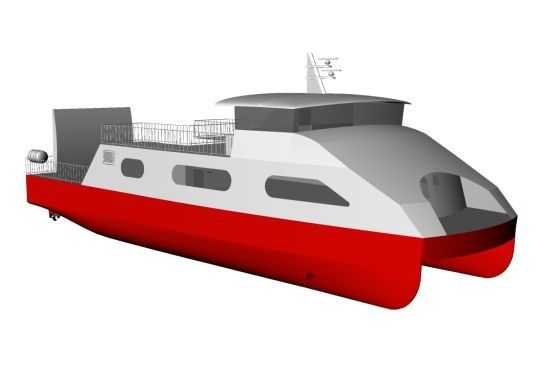Lightweight ferry increases resource efficiency
In a Danish-Swedish project, a ferry has been designed using lightweight materials, and compared with a steel ferry. The purpose was to demonstrate that fuel consumption could be reduced, when compared to traditional steel ferries. Results were positive, indicating that the new ferry's fuel consumption could be halved.

The challenge
It is known that there is a connection between the weight of transported load and required power. Hence it is clear that a lighter ferry can carry the same pay load with less power. Because of higher fuel costs and increased environmental awareness in the shipbuilding industry, it has become important to find new methods to reduce fossil fuel use and thus reduce the environmental impact.
The innovation
By designing a modern ferry from lightweight materials instead of a traditional steel ferry, the ECO-island ferry project aimed to demonstrate the opportunities to reduce the environmental impact and save fuel costs and thus collecting alternatives to provide more sustainable transport. The projected was run by partners from both Sweden and Denmark and was financed by Den Danske Maritime Fond, SP Technical Research Institute of Sweden and Västra Götalandregionen (venture capital for development, demonstration and commercial exploitation). The manufacturing of the new ECO-Island ferry made use of a sandwich material composed of a SAND-core, an outer laminate and an inner laminate. This material composition is much stronger than steel that is used for the reference ferry Tunø. The ECO-Island ferry is constructed to take on board as many passengers as Tunø, i.e., 200 passengers. The ferries are similar since they also can receive an equal number of cars, sail the same distance each year and have the same top speed. What differentiates them is that Tunø is traditionally built while the ECO-Island ferry is a catamaran. This means that the new ferry has better stability and a reduced water resistance. The ECO-island ferry has a halved fuel consumption compared to Tunø, due the improved design in combination with lightweight materials. It therefore has a smaller machine and fuel tanks as it weighs less and requires less fuel for a similar range.
Why did it work?
The ECO-Island ferry has the potential to reduce both fuel emissions and costs. The new ferry is also almost completely maintenance free, when compared to a steel ferry. This allows for substantial cost savings.
Further deployment
The ferry has only been demonstrated in detailed drawings, but the project shows that the ferry would reduce both fuel emissions and costs, compared to a traditional ferry made of steel. Since the technology is ready for full scale deployment and commercial deployment, the innovation is at level 3 on the TRL scale.
Links:
The websiteThe PartnersThe brochure